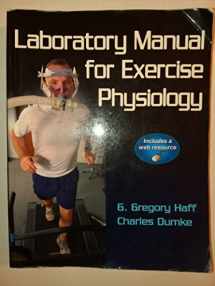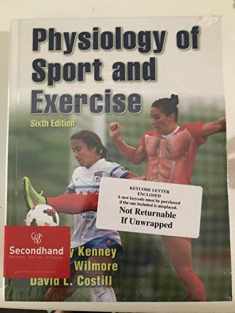
Laboratory Manual for Exercise Physiology With Web Resource
Book details
Summary
Description
Designed for undergraduate students, Laboratory Manual for Exercise Physiology: Predictions, Equations, and Test Methods offers comprehensive coverage of the basic testing procedures used in the assessment of human performance, health, and wellness. This user-friendly resource will assist students in developing the knowledge and skills to perform a wide range of tests and to critically analyze and synthesize data.
Authors Gregory Haff and Charles Dumke have assembled a text that introduces readers to testing that can be applied in a variety of professional settings. The book’s 15 labs encompassing 49 activities lead students through a series of learning opportunities that explore the basics of testing and pretest screening as well as methods for evaluating flexibility, blood pressure, oxygen consumption and energy expenditure, aerobic and anaerobic fitness, lactate metabolism, muscular strength, pulmonary function, body composition, and electrocardiogram assessments.
Laboratory Manual for Exercise Physiology has been expertly sequenced to offer students an optimal learning experience. Organized in a logical progression, the labs build in complexity as students progress through the book and develop their knowledge base. A consistent heading structure enables students to easily follow the material and grasp the focus of the activities. Each laboratory is a complete lesson beginning with objectives, definitions of key terms, and background information that set the stage for learning. For each of the laboratory activities, students will find step-by-step instructions, making it easier for those new to the lab setting to complete the activities. Figures and photos throughout the text illustrate the key techniques. Data sheets are provided for each of the tests, allowing students to record their individual findings. Question sets found after each activity prompt students to put their lab experiences into context, and case studies help them understand the practical applications of the tests.
The manual includes many features that further support learning. Special binding allows the book to lie flat on the lab table, and perforated pages enable students to remove their completed worksheets from the manual for grading without removing content needed for future reference. A resource finder at the front of the book helps readers locate the tests and formulas they need. A web resource packaged with new texts provides additional tools that assist students in working through the lab activities. Here they will find each of the question sets—a handy way to fill in and print answers after completing a laboratory activity. Group data sheets found only in the web resource allow students to move beyond collecting individual data. They can use these group sheets to compile data from the entire class, calculate values such as mean and range, and compare their findings to the normative data discussed in the lab.
Instructors will find that Laboratory Manual for Exercise Physiology offers great flexibility in choosing the activities that suit the needs of their course and their students. Each lab contains multiple activities that cover distinct methods for introducing the testing concepts. The activities can be adapted to specific lab settings, available equipment, and time allotted. Equipment lists at the beginning of each activity make it easier to choose the labs that will work best in the lab facility. To further assist instructors in preparing for courses, access to an image bank features all the photos, illustrations, and tables from the text that can be inserted into tests, quizzes, handouts, and other course materials.
Laboratory Manual for Exercise Physiology: Predictions, Equations, and Test Methods will help students build their professional knowledge and skills. This resource will give them the hands-on practice they need to learn in order to evaluate athletes, clinical clients, and other healthy individuals.


We would LOVE it if you could help us and other readers by reviewing the book
Book review



